
Dazzling ceiling art: 10 of the best examples, from The Louvre to the Charminar in Hyderabad, India
- There is more to ceiling art than the friezes of The Vatican’s Sistine Chapel, from a mosque in Malaysia to a temple in Seoul to a monastery in Nepal
- Spanish architect Santiago Calatrava’s ceiling at a New York transport hub is a modern marvel, and Antoni Gaudi’s Palau Güell, Barcelona, is something to behold
Tourists visiting the Vatican City flock to its Apostolic Palace to gaze up at the Sistine Chapel’s famed frescoes, but the world possesses many other dazzling ceilings that can be marvelled at and have stories to tell.
Some are decorated according to ancient design systems, others with bewitching geometric patterns, folkloric symbolism, mythical beasts or epic scenes of combat.
Here are 10 of the best; from Malaysia to Scotland, and South Korea to the United States.
1. Apollo Gallery, The Louvre, Paris, France
The world’s best hotels in 2023? Hong Kong has 2. Can you guess which ones?
On a recent visit, I often found myself ignoring the priceless items on the walls in favour of gazing upwards, especially in the wildly lavish Apollo Gallery.
Drenched in gilded features, the gallery is embellished by myth-laden murals on its vaulted ceilings. Most prominent among them is Apollo Slays the Python, by French Romantic artist Eugène Delacroix (1798-1863), which depicts the Greek god Apollo in a torrid battle with a serpentine beast.

2. Sultan Salahuddin Abdul Aziz Mosque, Shah Alam, Malaysia
It feels like I am being sucked into a vortex. The giant, dark-brown ceiling above me is adorned with a concentric pattern that is hypnotising, gradually drawing my eye towards its core.
The pattern lines the interior of a colossal dome, one of the many notable design features of the mosque, which was completed in 1988.
Now, he says, it is a popular destination for tourists seeking a picturesque social media backdrop.

3. Oculus Transportation Hub, New York, United States
This mall and railway station was designed by Spanish architect Santiago Calatrava and completed in 2016, at a cost of about US$4 billion.
The interior is even more beguiling due to its unique ceiling. Dominated by dozens of white, steel rafters, it resembles a colossal rib cage and is made all the more picturesque by a 100-metre-long skylight, which casts dramatic shadows.
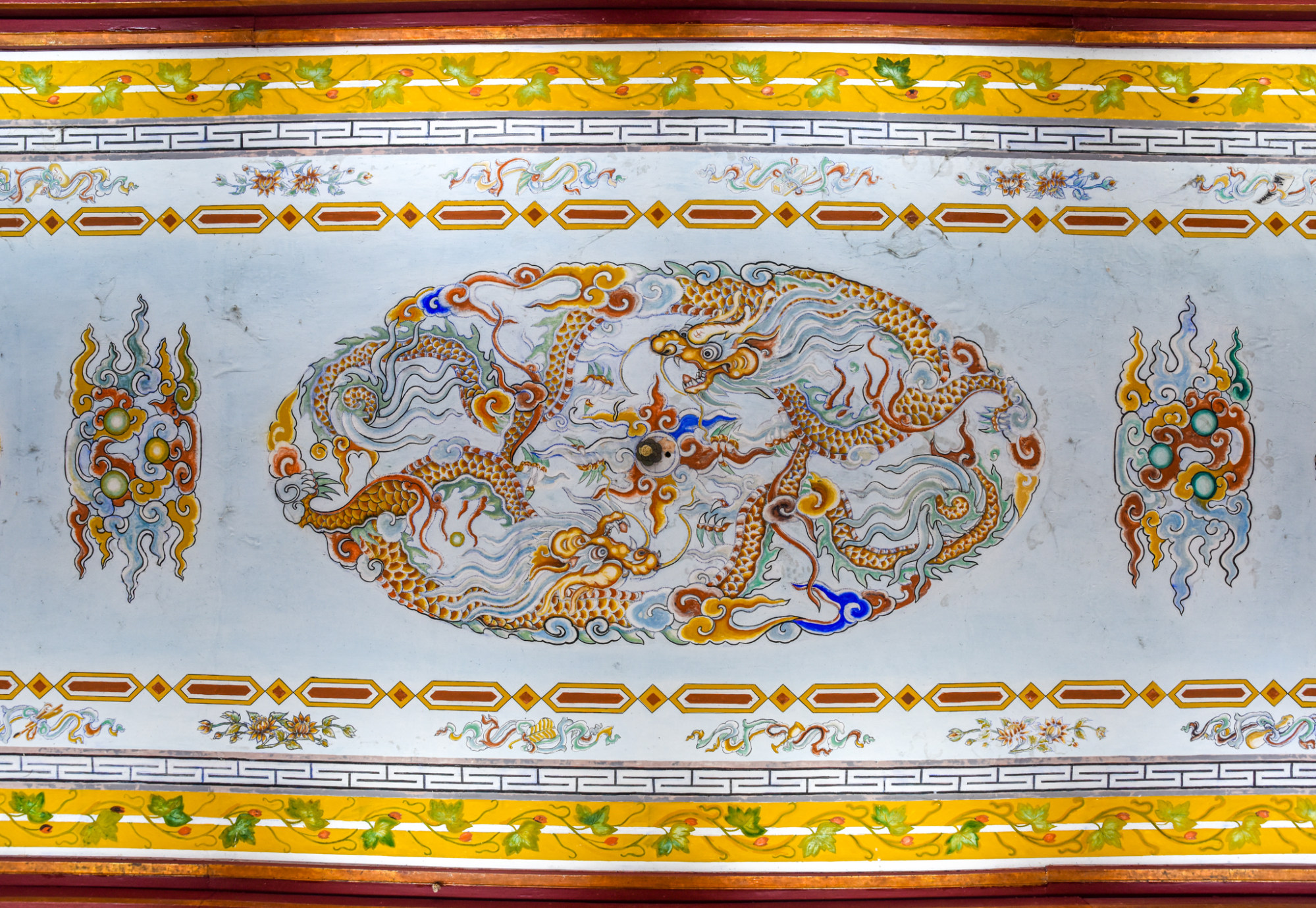
4. Mandarins’ Building, Hue, Vietnam
Built in the early 1800s as the headquarters of Vietnam’s Nguyen dynasty, this citadel still has about 20 intact buildings. Many boast splendid, hand-painted ceilings. This hall has the finest of them all, emblazoned with depictions of Vietnam’s four sacred creatures – the dragon, turtle, unicorn and phoenix.

5. Chapel of the Holy Shroud, Turin, Italy
Turin, in northwest Italy, is known for a four-metre-long strip of cloth that was supposedly worn by Jesus and bears marks of his body. Its provenance is disputed, but tourists still swarm the Chapel of the Holy Shroud, where a replica of the linen strip is on display.
Overhead, inside this 17th century chapel built by Italian architect Guarino Guarini (1624-1683), is a phenomenal dome. Resembling a gear inside a complicated watch, it has layers of hexagonal shapes complemented by gilded features and arched windows that funnel light into the church.
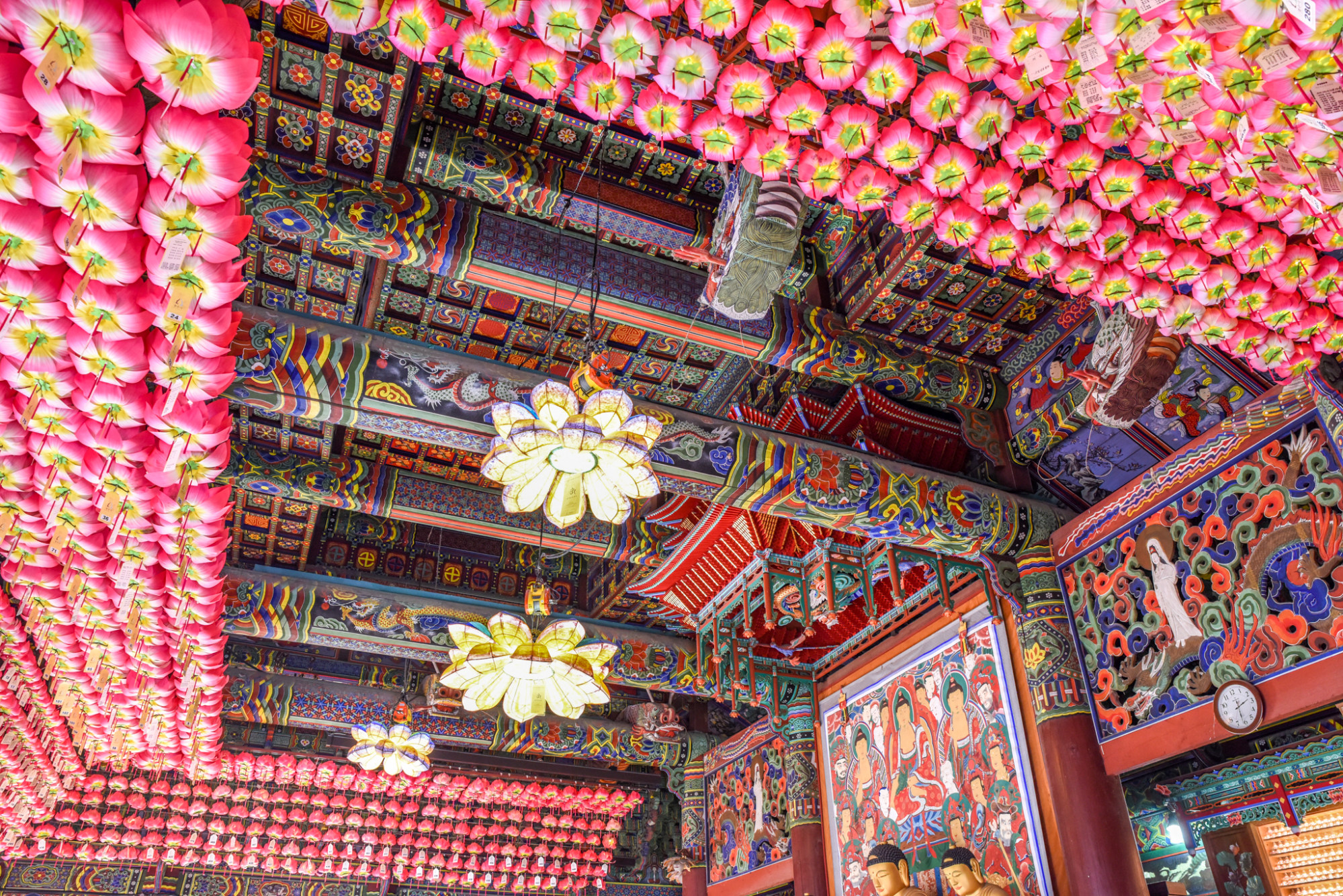
6. Bongeunsa Temple, Seoul, South Korea
The Bongeunsa Temple is more than 1,200 years old, yet the ceiling of this Buddhist complex seems tailor-made for the social media generation, so drenched is it in colour and dense in detail.
Painted geometric patterns and floral motifs – trademarks of Korea’s Dancheong system for decorating key temples – are flanked by hundreds of handcrafted lanterns hung from the ceiling.
This prayer hall is most photogenic in September, when hundreds of monks congregate within for the annual Jeongdaebulsa ceremony.

7. St Giles’ Cathedral, Edinburgh, Scotland
Like an artistic interpretation of the Scottish flag, the ceiling above me is an ocean of blue criss-crossed by ribbed vaults.
Volunteer guides explain to visitors the church’s Gothic design and how over many centuries it survived many raids by the English.
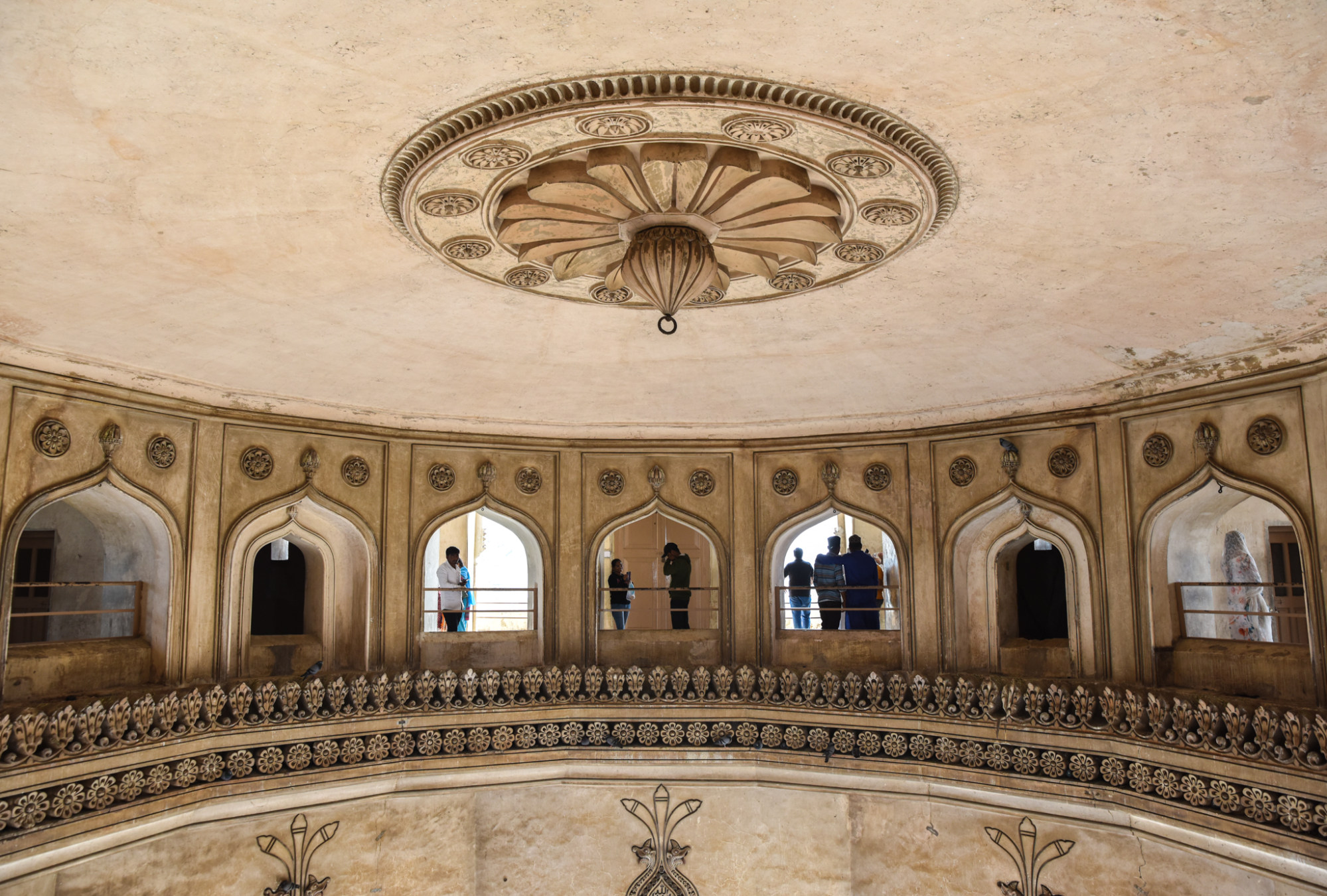
8. Charminar, Hyderabad, India
Thousands of people surround me yet it feels as though the collective din has been muted. Such is the transfixing effect of my first glimpse up inside the Charminar, a monument in Ghansi Bazaar, the teeming historical district of Hyderabad.
Shaped like an intrados (the inner curve of an arch), the stone ceiling is decorated with floral motifs and ringed by a gallery of arched windows, each of which is carved with Persian-style Arabesque patterns.
Visitors can peer through those openings by climbing the narrow staircases of the 49-metre-high Charminar, built in 1591 by the Qutb Shahis, an Islamic dynasty that was heavily influenced by Persian culture.
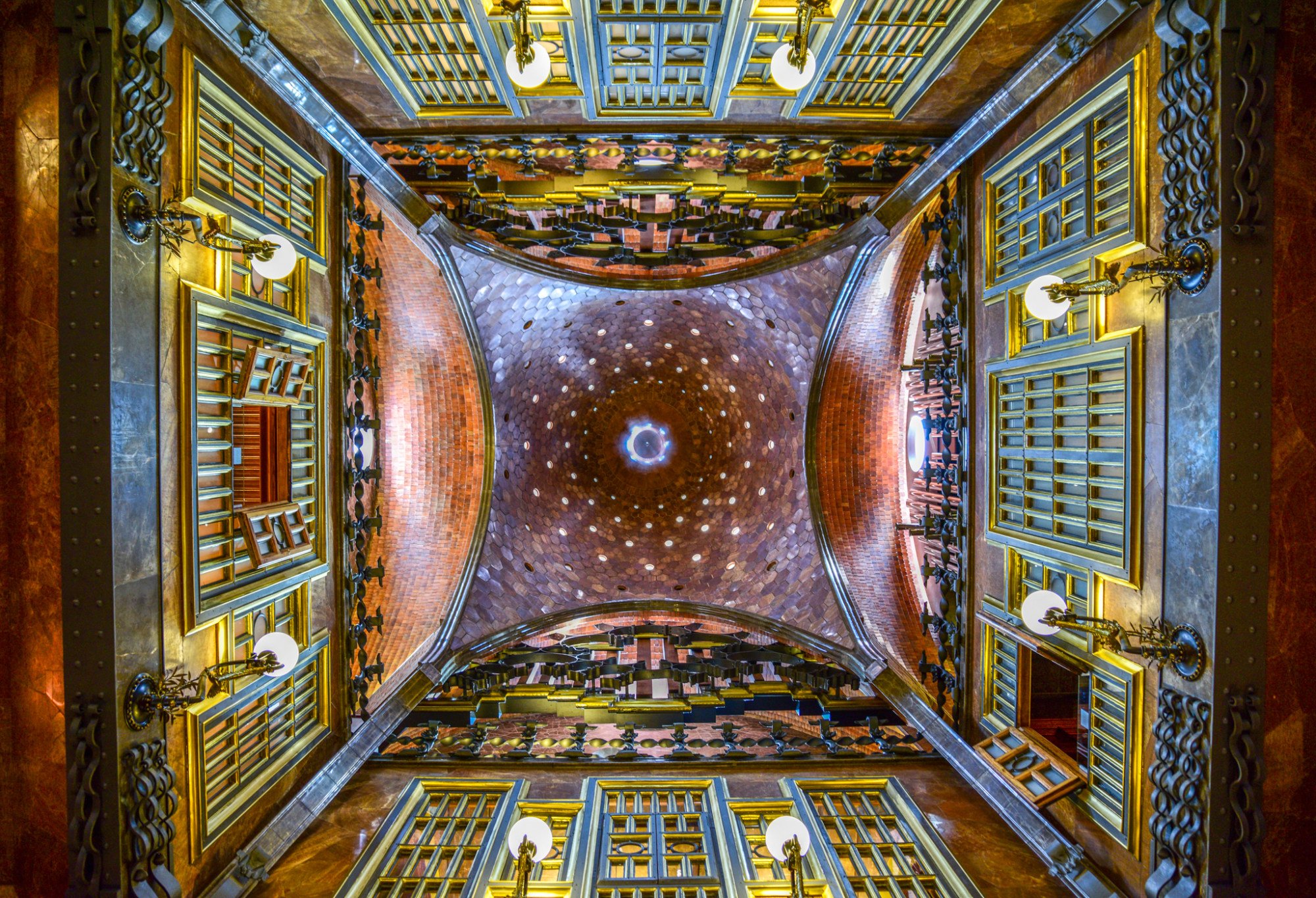
9. Palau Güell, Barcelona, Spain
And you could fill a memory card snapping away beneath his Palau Güell mansion’s dark wooden ceilings, which reach a zenith in the building’s central hall.
Complementing the extravagant woodwork is a parabolic dome pierced by small holes, which filter natural light and make the ceiling look like a sky dotted by stars.
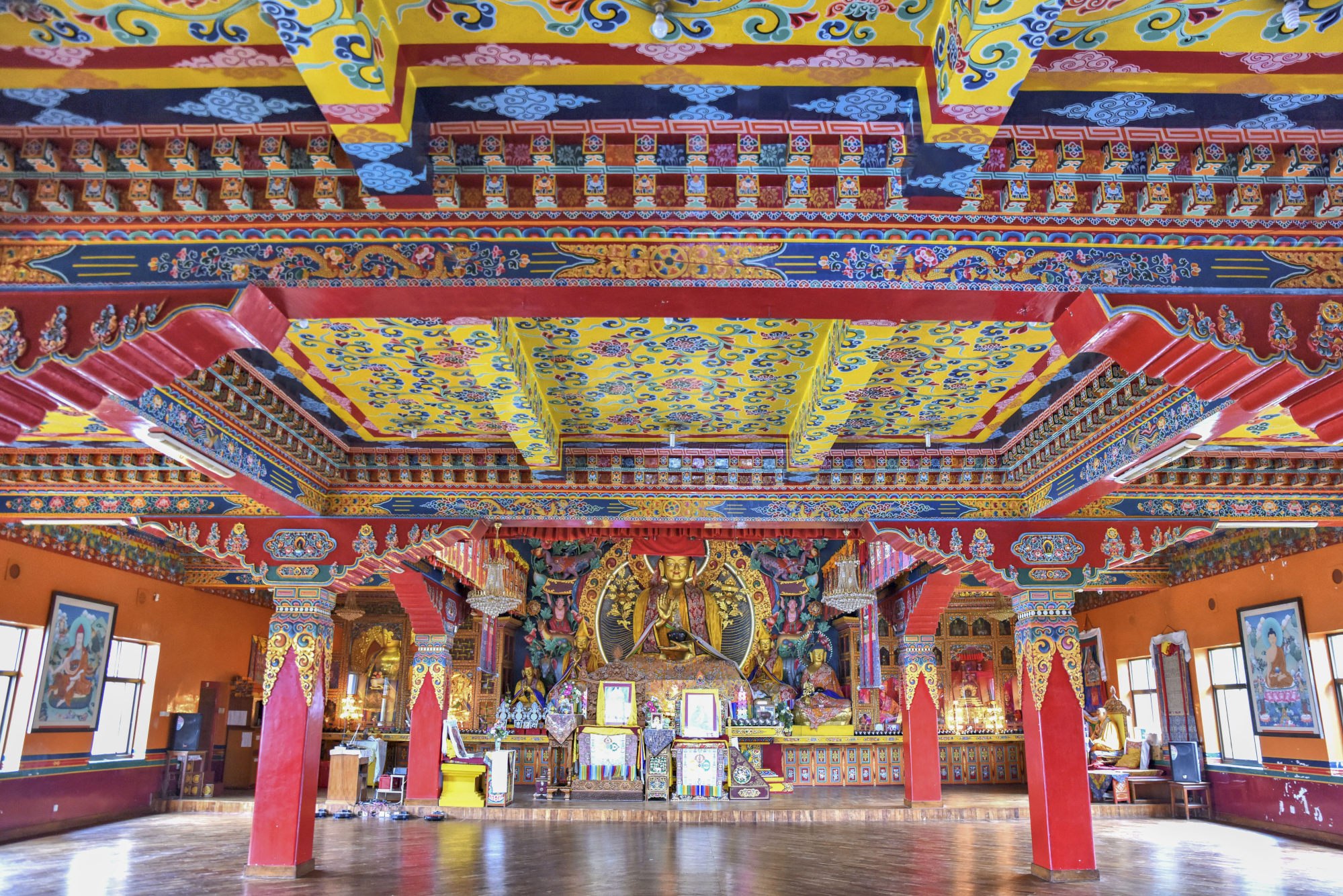
10. Kopan Monastery, Kathmandu, Nepal
Sunglasses are almost a necessity while viewing the bright ceiling of the Kopan Monastery.
Its grounds are soothingly serene as I wander past novice monks while searching for its photogenic prayer hall.
Inside is a riot of colours, motifs and murals splashed over its ceiling. Depictions of Buddha and mythical creatures such as the Garuda are positioned amid floral splendour or dense geometric patterns.











